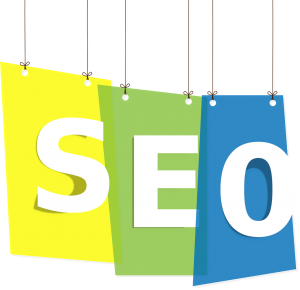On-Page SEO: 7 Ways To Optimize Your Amazon Store Blog Posts
In our post about the benefits of blogging, you learned a thing or two about the importance of having a blog associated with your Amazon store. But before you begin to look for free traffic sources, you need to first implement several “on-page SEO” techniques designed to make your blog posts more inviting to the search engines.
What is On-Page SEO?
Search Engine Optimization (SEO) is a rapidly changing practice which has undergone a myriad of changes in recent years. It involves various internal and external factors that have an effect on your website pages being listed in the search engines.
On-page SEO refers to any measure applied directly to your website or blog that improves its position in the search rankings.
 You don’t necessarily have to stay on top of the latest industry news but you CAN implement a few basic on-page SEO techniques that are sure to optimize your Amazon store blog. So here are some basic things you need to have in place on each blog post:
You don’t necessarily have to stay on top of the latest industry news but you CAN implement a few basic on-page SEO techniques that are sure to optimize your Amazon store blog. So here are some basic things you need to have in place on each blog post:
#1: Keyword. Choose a good primary keyword or key word phrase that is central to your topic and related to the overall content of your blog. Your keyword will be used in various elements of your post including the title, headings and main body of your content.
A word of caution … gone are the days of keyword-stuffing in an effort to fool the search engines. DO NOT be tempted to engage in this black-hat practice as you will jeopardize your entire site.
#2: Title. A descriptive title (title tag) tells online searchers and search engines what your post or page is about. Each time you create a new post, you want to:
. . . compose an interesting title that is less than 55 to 65 characters long
. . . incorporate your targeted keyword near the beginning of the title
This serves to please the search engines and compels visitors to click through to the article.
#3: URL Structure. A URL is simply the web address of your blog post which the search engines use to determine page rank.
Example: YourDomainName.com/your-keyword-blog-post-title
For every blog post you make, WordPress creates a URL structure based on your domain and the post title. The most common URL title structure after the forward slash (see above) includes dashes between words and no other special characters. It is important that your URL string includes your targeted keyword and is not too long.
#4: Headings. When you write content for your site, you want to include sub-headings within the body of your article. Heading formats you normally see include: Heading 1 … Heading 2 … Heading 3 … Heading 4 and so on.
Instead of just bolding text when creating sub topics or emphasizing certain important points, consider using Headings 2, 3 or 4 … but sparingly. It’s not only easier for visitors to read but signals the search engines that a new sub-topic has been started and that the content is important.
Note: In WordPress, since your “Title” is automatically assigned the h1 heading tag, you don’t need to use the h1 tag in any of your body copy. And beware of over-using heading tags as it is seen as a negative SEO practice.
#5: Meta Description. In 160 characters or less, you need to use your keyword to compose a brief summary of what the blog post or page is about. And make sure your description is written in a way that will attract a potential visitor.
At this juncture, you should know that there is a widely used WordPress plugin that makes on-page SEO easy. It’s called WordPress SEO by Yoast and it’s free. You can add it to your blog from within WordPress.
With a plugin like this, you will be presented with a special “meta description” field where you can simply input your summary prior to publishing your post.
#6: Images. Without a doubt, photos and other graphics add visual impact to your blog post. And there’s a way to please the search engines too. Believe it or not, by placing your keyword in the title and Alt text of your image, it goes a long way in making your blog post more focused and targeted … something the search engines love.
Whenever you upload an image to WordPress, you’ll be given the opportunity to fill in the image title and alt text fields before inserting into your post.
#7: Internal Links. An internal link is hyperlinked text directed to a related post or page on your website. Interlinking of blog posts not only entices visitors to spend more time on your site but also serves to send additional traffic to other parts of your blog or store.
When linking to other blog pages, make sure to use keyword-rich anchor text that will help the related post fare better in the search engines.
Today, Search Engines Place More Value On Good Content, Structure and Design
While some of these things may seem trivial, on-page SEO has a huge impact on how the search engines see your individual posts and your site overall.
From keywords and titles … to headings, tags and meta descriptions, search engines use algorithms to decipher these elements so that they can direct relevant traffic to your blog and ultimately to your Amazon affiliate store. And that’s just what you want!